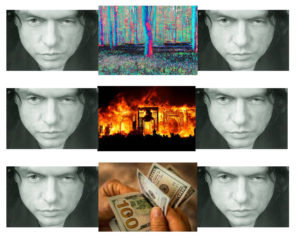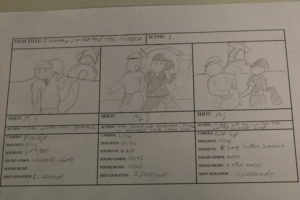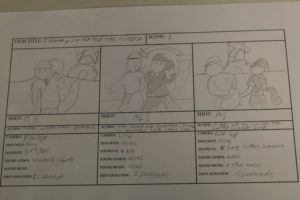All posts by Joshua Du Val
Filters
Films In The 1910’s: Lighting
Films In The 1910’s: Cameras
Films in the 1910’s: Editing
Films In The 1910’s: PowerPoint Script
Editing –
There was relatively little editing in the 1910’s. The furthest editing would go back in the 1910’s, was when a film consisted of more than one shot. Without the use of the technology we have today, they would achieve this by physical cutting up a film reel using scissors. The most notable use of this in this decade was in 1918, with Russian director Lev Kuleshov. He made the Kuleshov Effect, on which the face of an actor is shown, then the film cuts away to something else. In this case, a bowl of soup, a dead child, and a woman. Back when this was made, audiences gave the actor credit for his acting, but the audience didn’t know that the recording of the actor was taken 10 years prior. This proved that the effect worked.
Cameras –
The cameras back in the 1910’s wasn’t very advanced, technology wise. Cameras were stationary while taking a shot, because cameras were not portable yet. However, there was some advances in the technology of cameras. This was in the form of an iris, which is a device installed on the front of the camera, which can be opened or closed. When closed, kit isolated a shot, focusing in on a certain aspect of the shot, instead of giving a wide sot of the area.
Lighting –
The 1910’s is when the film industry began to understand lighting. Prior to 1910, and a little into the century, all films were shot outside, taking advantage of the natural light. However, as the century advanced, more and more films making companies moved indoors, utilizing the use of artificial light, as it gave the director more control over the film’s mood, and what each shot would look like.
Sound –
Back in 1910, there was no such thing as actors talking. The best there was, was when the film would cut away from the action and show some text on screen, which would be a character talking. However, there was music in films, such as Frankenstein (1910). These usually consisted of orchestral themes, which would help dictate the mood of the film. These Musical pieces would not be recorder but performed live for the audience while the films were shown.
The Use Of Editing In Whiplash (Damien Chazelle)
The Use Of Sound In Dunkirk (Christopher Nolan)
Sound Editing and Mixing
A sound editor is someone who decides what sounds should be in a film. They’ll look at a film without sound, and decide that they should have a sound effect of paws hitting the ground while a dog is walking. Or they may decide that there should be sound for a ray gun.
The sound mixer is a bit different however. A sound mixer is given all of the sounds the edited has decided to put in the film, and the mixer will decide how the audience will hear the sound. That goes along with the volume, weather it increases or decreases, stuff like that.
The Kuleshov Effect

The Kuleshove Effect is when a characters face is shown, then it cuts to something else, and back to the face. This effect works, because it the audience assumes that the face we are seeing is either looking or doing that other thing we were shown between the 2 faces. This shows the power of editing, as the editor can make the character either likable, or evil, depending on what the editor decides to put on in that moment between the faces.
Miller and the Sweep Story Board


